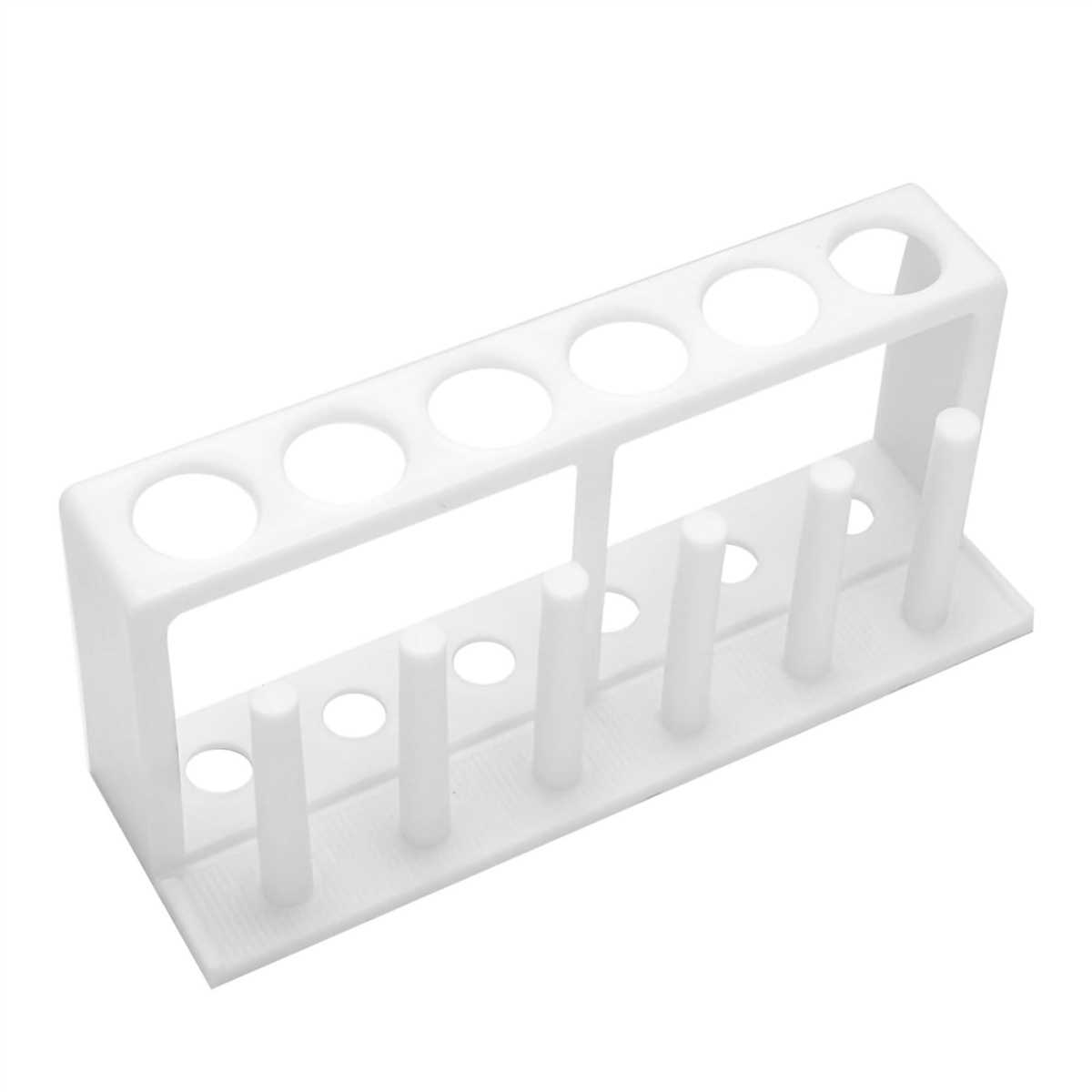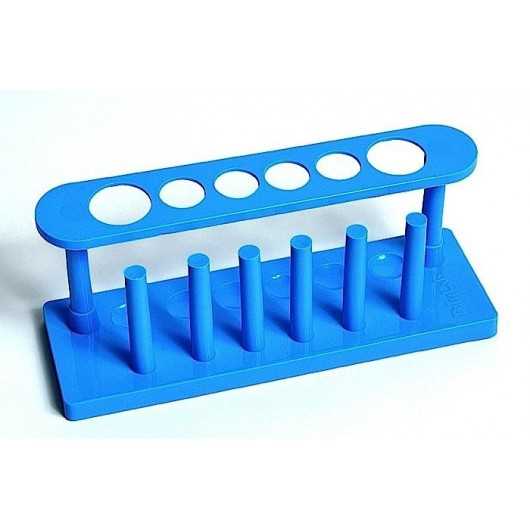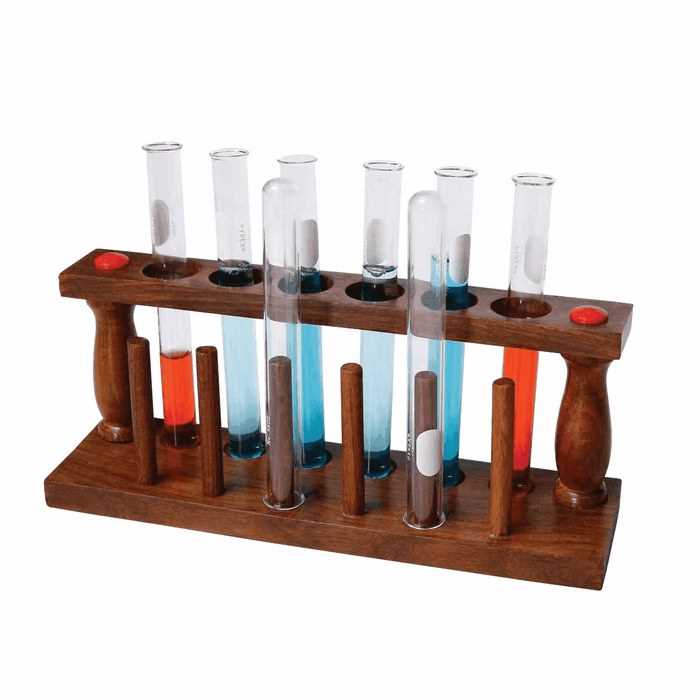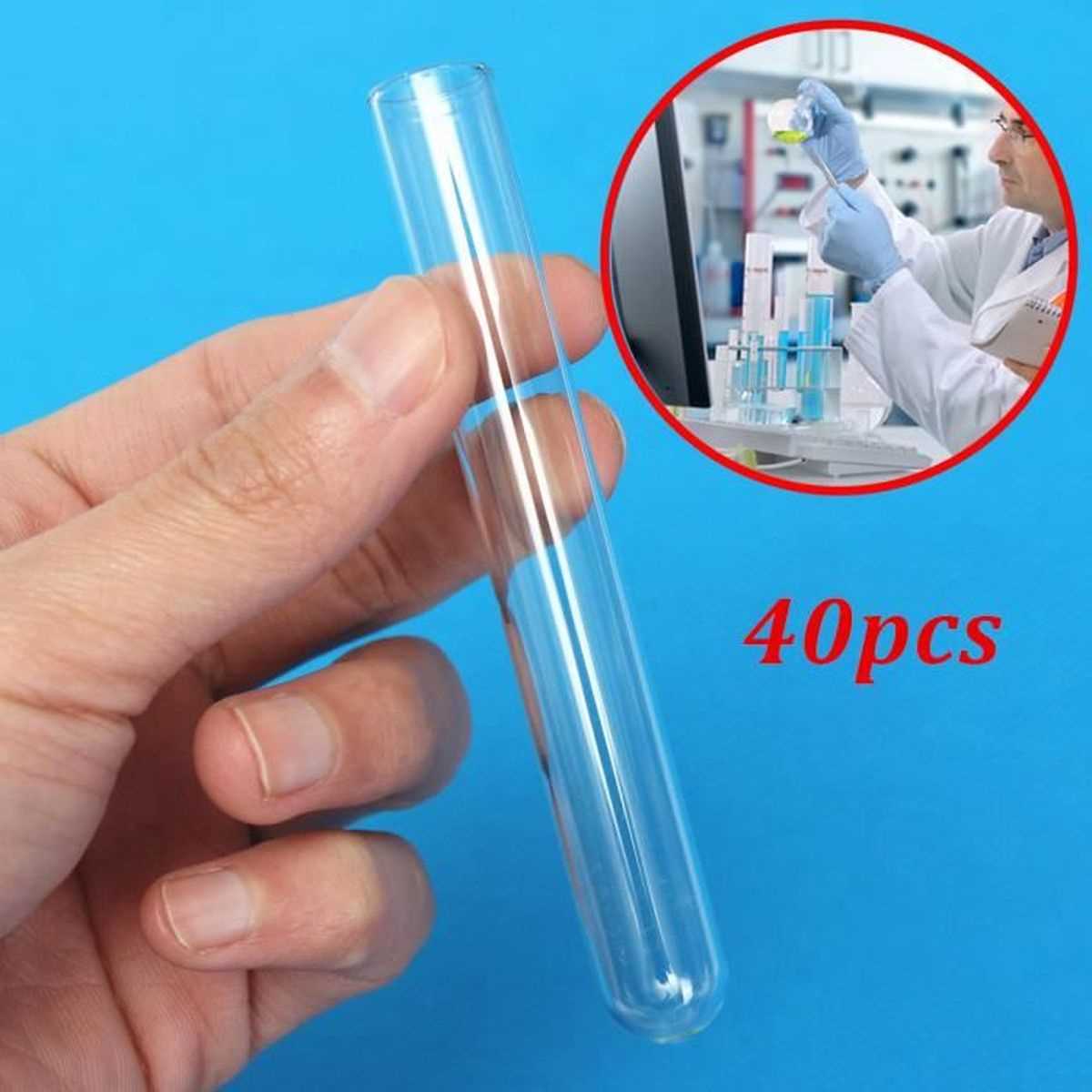
A test tube holder is an essential tool used in laboratories to safely handle test tubes while conducting experiments or performing chemical reactions. Test tubes are narrow, cylindrical tubes made of glass or plastic, and they are used to hold small amounts of liquid or solid substances during scientific investigations.
The test tube holder is designed to securely hold the test tubes and provide a firm grip, allowing the researcher to manipulate them without the risk of spills or accidents. It consists of a metal clamp with two jaws that can be adjusted to accommodate different sizes of test tubes. The jaws of the holder are lined with rubber or an insulating material to prevent direct contact between the test tube and the metal, which could cause the tube to break due to thermal stress.
One of the main advantages of using a test tube holder is that it ensures the safety of both the researcher and the experiment. By firmly gripping the test tube, the holder reduces the risk of dropping or spilling the contents, which could potentially cause chemical burns, contamination, or damage to the experiment. It also allows for easier manipulation of the test tube, such as shaking or swirling, without the need to touch it directly.
Test Tube Holder Used in Laboratory
A test tube holder is an essential tool used in laboratories to safely hold and manipulate test tubes during various scientific experiments and processes. Test tubes are commonly used in chemistry, biology, and medical research to hold and mix small quantities of liquids or substances. The test tube holder provides a secure grip on the test tube, allowing researchers to handle them with precision and control.
Types of Test Tube Holders:
- Clamp-style: This type of test tube holder features a spring-loaded clamp that securely holds the test tube. It can be attached to a stand or a retort stand for hands-free operation.
- Rubberized grips: Some test tube holders have rubberized grips or sleeves that provide a non-slip surface and protect the glass test tube from breaking.
- Multi-tube holders: These holders are designed to hold multiple test tubes simultaneously, allowing researchers to work with multiple samples at once.
Uses of a Test Tube Holder:
- Transferring liquids: A test tube holder is used to hold and transfer liquids from one container to another. It ensures that the liquid remains secure and does not spill.
- Heating substances: Test tubes can be heated over an open flame or a Bunsen burner using a test tube holder. The holder provides a safe and stable grip, preventing accidents and injuries.
- Mixing solutions: Researchers often need to mix different solutions in test tubes. The test tube holder allows them to hold the tubes securely while swirling or mixing the contents.
- Observing reactions: Test tubes are used to conduct various chemical reactions. The holder helps researchers observe the reactions closely without compromising safety.
A test tube holder is an indispensable tool in any laboratory setting. It ensures the safe handling of test tubes, protecting researchers from potential accidents and allowing them to perform experiments with precision and accuracy.
Overview
A test tube holder is a crucial tool used in laboratories for holding test tubes during experimentation and analysis. It provides a secure grip on the test tube, preventing accidental spills or breakages that could jeopardize the experiment or the safety of the researcher.
Test tube holders are typically made of heat-resistant materials such as metal or plastic to ensure they can withstand the high temperatures often encountered in laboratory settings. They are designed with a spring-loaded mechanism or adjustable grip to accommodate different sizes of test tubes, ensuring a tight and secure hold.
The primary function of a test tube holder is to provide stability and control while working with test tubes. It allows researchers to safely transport test tubes from one location to another, whether it’s from a storage rack to the experimentation area or between different stages of an experiment.
In addition to holding test tubes, some test tube holders also come with features such as a built-in clamp or attachment that allows them to be securely fastened to a stand or other equipment. This enhances the stability of the setup and minimizes the risk of accidental spills or breakages.
Overall, a test tube holder is an essential tool in any laboratory, providing researchers with the necessary stability and control when working with test tubes. Its design and functionality are aimed at ensuring the safety of both the experiment and the researcher.
Key Features of a Test Tube Holder
A test tube holder is an essential tool used in laboratories for safely holding test tubes during experiments or analysis. It is designed to provide a secure grip on the test tube, preventing it from slipping or breaking, and ensuring the safety of the user and the integrity of the experiment. There are several key features that make a test tube holder an effective and reliable tool in the laboratory.
1. Sturdy and Durable Construction

A test tube holder should be made of sturdy and durable materials, such as stainless steel or plastic, to ensure its long-lasting performance. It should be able to withstand frequent use and the demands of various laboratory environments without compromising its functionality or safety.
2. Adjustable Design
An adjustable test tube holder is highly desirable as it allows the user to accommodate different sizes of test tubes. The holder should have an adjustable grip or clamp that can secure test tubes of various diameters firmly. This feature ensures versatility and usability, as it eliminates the need for multiple holders for different test tube sizes.
3. Heat Resistance

Since test tubes are often used in experiments involving heat, it is important that the test tube holder is heat-resistant. It should be able to withstand high temperatures without deforming or damaging the holder. This feature ensures the safety of the user and the integrity of the experiment.
4. Non-Slip Surface
To prevent the test tube from slipping out of the holder’s grip, it is crucial that the holder has a non-slip surface. This can be achieved through the use of rubber or silicone grips that provide a secure hold on the test tube. A non-slip surface ensures stability and reduces the risk of accidents or spills during experiments.
5. Easy to Clean and Maintain
A test tube holder should be designed for easy cleaning and maintenance. It should be easy to wipe clean after each use and resistant to stains or corrosion. This feature ensures hygiene and longevity, as a clean and well-maintained holder is less likely to harbor bacteria or deteriorate.
In conclusion, a good test tube holder should have a sturdy and durable construction, an adjustable design, heat resistance, a non-slip surface, and ease of cleaning and maintenance. These key features ensure the safety, functionality, and longevity of the test tube holder in laboratory settings.
Types of Test Tube Holders

Test tube holders are essential tools used in laboratories to securely hold test tubes during experiments and analyses. They come in various types, each designed to accommodate different sizes and functions of test tubes. The choice of test tube holder depends on the specific requirements of the experiment and the characteristics of the test tubes being used.
1. Wooden Test Tube Holder
A wooden test tube holder is a classic option that provides a sturdy grip for holding test tubes. It is typically made of hardwood, such as oak or beech, and features evenly spaced holes that can accommodate multiple test tubes of various sizes. The wooden construction offers great durability and can withstand high temperatures, making it suitable for a wide range of laboratory applications.
2. Metal Test Tube Clamp
A metal test tube clamp is a versatile holder that uses spring-action or screw-based mechanisms to secure test tubes. These clamps are usually made of stainless steel or nickel-plated brass, which provide excellent resistance to corrosion. Metal test tube clamps can be adjusted to fit different sizes of test tubes, ensuring a firm and secure grip. They are commonly used in chemistry labs for heating or mixing substances contained in test tubes.
3. Plastic Test Tube Rack
A plastic test tube rack is a lightweight and cost-effective option for holding test tubes. It is made of plastic materials, such as polypropylene or acrylic, which are resistant to chemicals and easy to clean. Plastic test tube racks have rows of evenly spaced holes that can securely hold a set number of test tubes. They are commonly used in biology and microbiology labs for organizing and storing test tubes during experiments or specimen analysis.
4. Test Tube Holder with Rubber Grips
A test tube holder with rubber grips is designed to provide a secure and non-slip grip on test tubes. It usually consists of a metal or plastic frame with rubberized handles or adjustable rubber grips that hold the test tubes firmly in place. The rubber material helps prevent the test tubes from slipping or breaking during handling. This type of holder is commonly used in medical or pharmaceutical labs where precise handling of delicate test tubes is required.
In conclusion, the choice of test tube holder depends on the specific requirements of the experiment and the characteristics of the test tubes being used. Whether it is a wooden holder for durability, a metal clamp for adjustable grip, a plastic rack for organization, or a holder with rubber grips for secure handling, there are various options available that cater to different laboratory needs. Choosing the right test tube holder ensures the safety and efficiency of laboratory procedures.
How to Use a Test Tube Holder
In laboratory settings, a test tube holder is an essential tool used to securely hold test tubes during various experiments and procedures. This simple yet effective device provides a firm grip on the test tube, allowing for safe and precise handling. To properly use a test tube holder, follow these steps:
Step 1: Choose the Right Test Tube Holder
There are different types of test tube holders available, including those made of plastic or metal. Ensure that you select a test tube holder that is suitable for the type of test tube you will be working with.
Step 2: Adjust the Holder
Before securing the test tube, adjust the test tube holder to accommodate the size of the test tube. Most test tube holders have an adjustable clamping mechanism or an adjustable spring-loaded clamp that can be loosened or tightened as needed.
Step 3: Position the Test Tube
Once the test tube holder is adjusted, carefully position the test tube between the jaws of the holder. Make sure that the test tube is centered and secure within the holder to avoid any accidental slips or breakages.
Step 4: Grip the Test Tube
With the test tube in position, firmly grip the test tube holder using your hand. Ensure that you have a comfortable grip on the holder, allowing for stability and control throughout the experiment or procedure.
Step 5: Conduct the Experiment
With the test tube securely held in the test tube holder, you can now proceed with the experiment or procedure. Safely handle the test tube as needed, such as heating or mixing its contents, while keeping a firm grip on the holder to prevent any mishaps.
Remember to always exercise caution and follow proper laboratory safety protocols when using a test tube holder. When finished, carefully release the test tube from the holder and clean both the test tube and the holder according to proper laboratory hygiene practices.
Safety Precautions when Using a Test Tube Holder
When using a test tube holder in the laboratory, it is important to follow certain safety precautions to ensure the well-being of both yourself and those around you. Here are some key safety tips to keep in mind:
- Use proper protective equipment: Always wear appropriate personal protective equipment (PPE) such as gloves, goggles, and a lab coat when handling test tube holders. This will help protect you from potential hazards such as broken glass and chemical spills.
- Inspect the test tube holder: Before use, carefully inspect the test tube holder for any signs of damage or wear. Do not use a test tube holder if it appears to be in poor condition, as this can compromise its functionality and pose a safety risk.
- Handle with care: Handle the test tube holder with caution, making sure to grip it firmly to prevent accidental slips or drops. Be mindful of the position of your hands and fingers to avoid any injuries.
- Maintain a proper grip: When using a test tube holder, ensure that you are gripping it securely around the tube, providing a strong and stable hold. Avoid gripping the tube holder too tightly, as this can cause the tube to break.
- Avoid excessive force: Do not apply excessive force or pressure when using a test tube holder. Gentle and controlled movements are recommended to prevent the tube from shattering.
- Keep flammable materials away: When using a test tube holder near a Bunsen burner or any other heat source, keep flammable materials such as solvents or papers at a safe distance to prevent accidental fires.
- Dispose of broken or damaged test tubes safely: If a test tube breaks or becomes damaged during use, handle the broken glass with extreme caution. Carefully dispose of the broken glass in a designated glass disposal container to prevent injuries.
By following these safety precautions when using a test tube holder, you can minimize the risks associated with handling glassware and ensure a safe and productive laboratory environment.